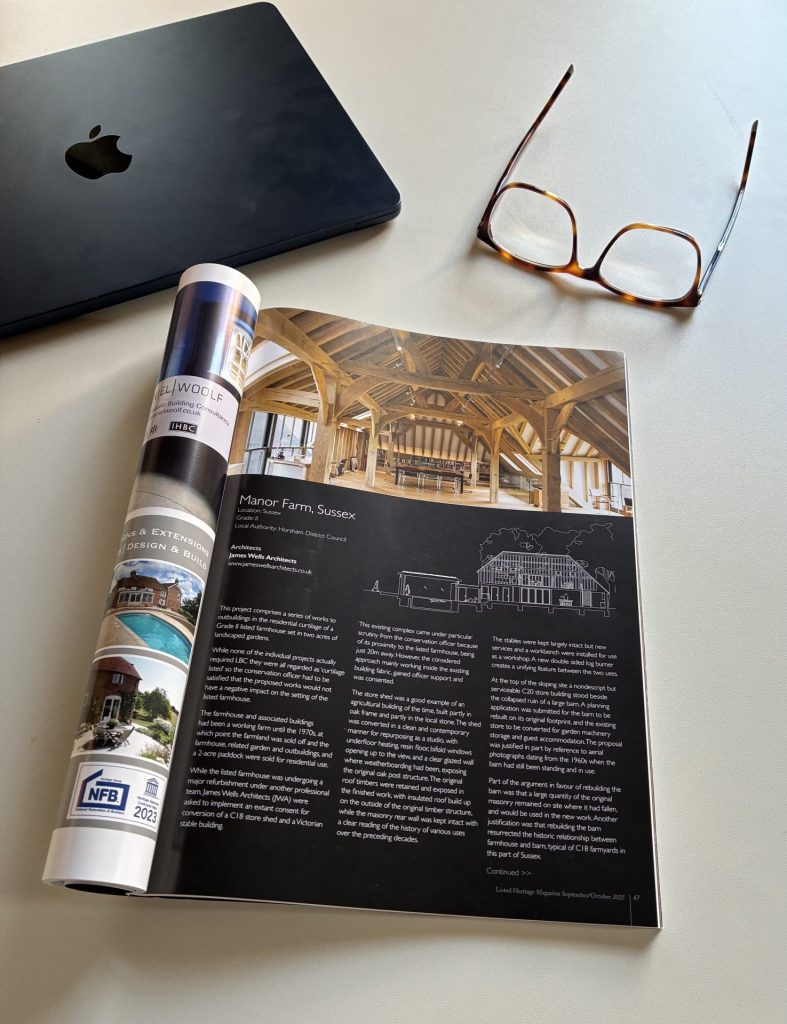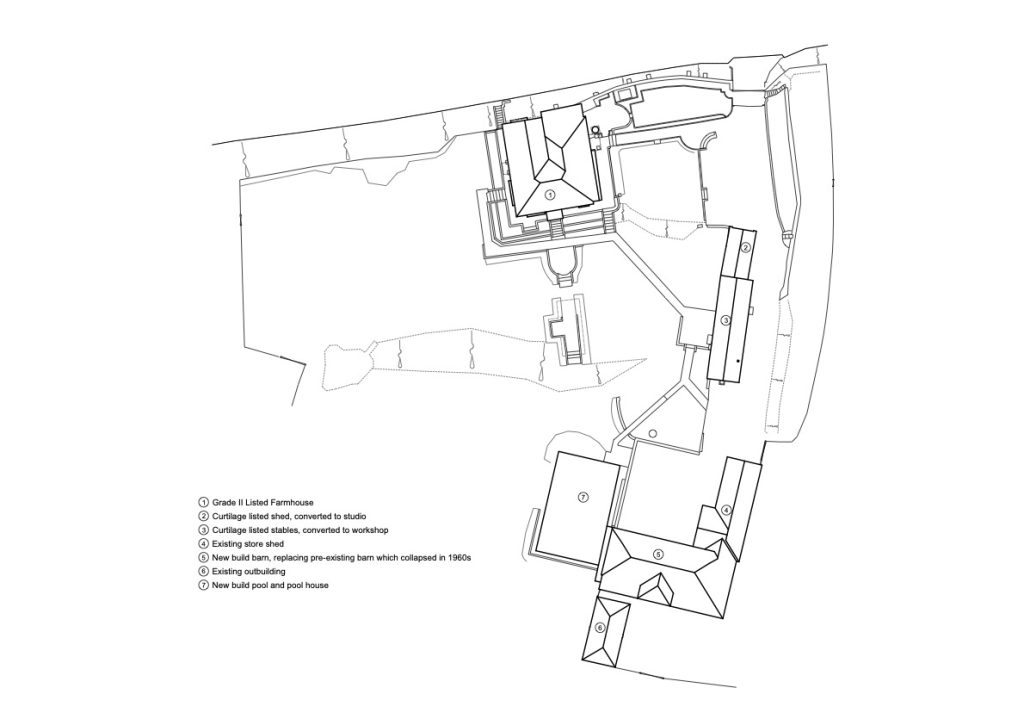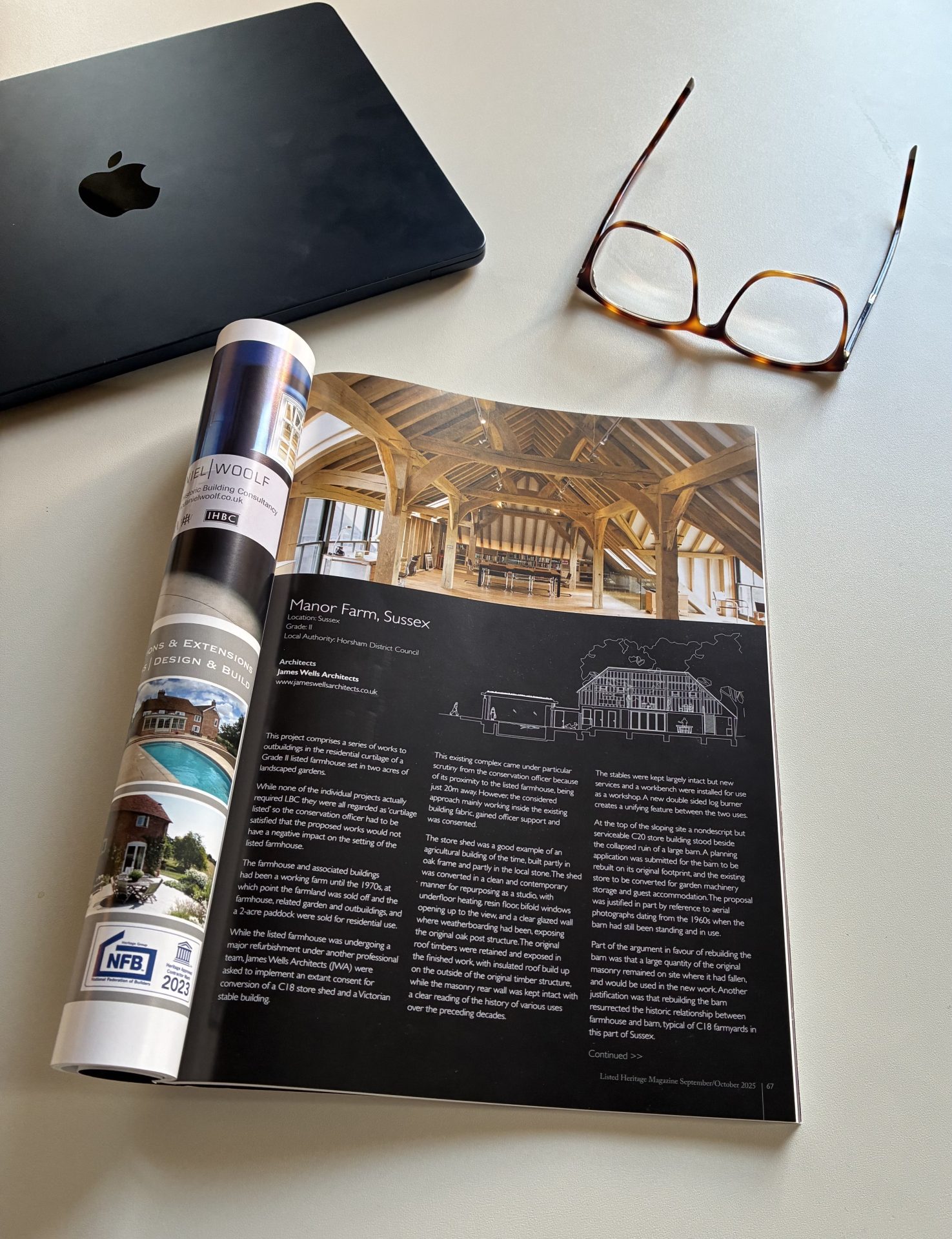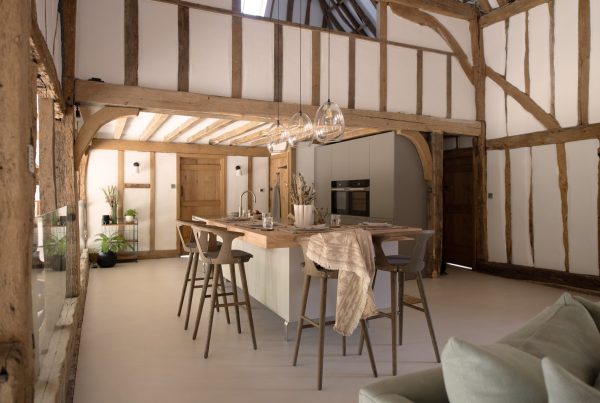The latest issue of Listed Heritage Magazine features our scheme for a series of outbuildings works at a rural farm retreat in West Sussex. This project is featured in the column of the publication entitle Listed & Modern – where projects have successfully achieved planning permission for contemporary architecture juxtaposed within a heritage setting.

Listed Heritage Magazine feature
Phased extensive refurbishment
This project was undertaken over a three year time span where the workshop and studio were converted first whilst the farmhouse was being refurbished. The plan below shows the family of buildings which were part of this scheme. At the outset James worked with John Rippin, another local architect, who had instigated the project and achieved planning. As John was retiring, the client appointed James Wells Architects to obtain planning permission for a new pool and pool house. James redesigned the scheme to allow for the pool and pool house to be linked to the rebuilt barn, which houses the gym on the ground floor.
This project in West Sussex has created a beautiful family of buildings where the contemporary pool house complements the traditional listed farmhouse, and the collection of barns were carefully repurposed to suit a creative family life.

How to best convert disused farmstead buildings
We have recently undertaken three similar projects where a client has purchased a redundant farmstead. These commissions are located across West and East Sussex and have involved the reimagining of historic Farmyard groupings by refurbishing, converting or extending them for residential use. In each case we have undertaken a masterplan to repurpose redundant buildings for more appropriate contemporary living.
These projects come about for a number of reasons. Farmhouses are often listed as examples of high quality historic buildings which characterise the landscape and form an integral part of the history of the countryside. In addition they often occupy remote sites where there would be no other opportunity to create new housing to take advantage of a similar isolated rural location.
A farmyard group often comprises the following building types arranged around a rough square or rectangle:
- Farmhouse – often with four or more bedrooms, large kitchen, living spaces and store rooms
- Threshing barn – usually a generous volume with an open floor often originally chalk for carrying out the threshing and a wagon arch for carts to drive through.
- Stables – a farm might have accommodation for three or four horses, sometimes a more substantial farm might have a coach house as well.
- Storage sheds, outbuildings, granaries.
A farmhouse will often be listed, typically Grade 2. A large barn may be listed in its own right, but if not it is likely to be curtilage listed, as would the outbuildings – assuming they are of some historic significance. Sometimes we find that an oak framed barn may have collapsed and been replaced with an ‘Atcost’ steel or precast concrete frame barn in the 1960s or 70s. These may have importance in themselves not for their intrinsic value but for the fact that an existing building is on the site and creates a precedent for replacement.
Historic buildings – particularly C18 oak framed structures – tend to be massively over structured for the simple reason that barn builders in C18 had no way to calculate structures. Working on an empirical basis to create the large barn structure, there is plenty of redundancy in the structural members which makes them highly suitable for adaptation to other uses.
If a client wishes to add to the farmhouse group, as in the case of the poolhouse building illustrated in the article, a design approach can be supported by planning. An option is to propose a contemporary or modern design which takes up a footprint or massing in a familiar way to previous agricultural buildings. They should enclose on a courtyard, or create a range of buildings that complement one another with farm tracks or paths making natural connections between buildings.
If you have a Grade 2 building in need of sensitive expansion, please call our team on 01243 940020 today.
The original article can be seen in Listed Heritage, the membership journal of the Listed Property Owners’ Club. We worked closely on this project with Nicholls Countryside Construction



